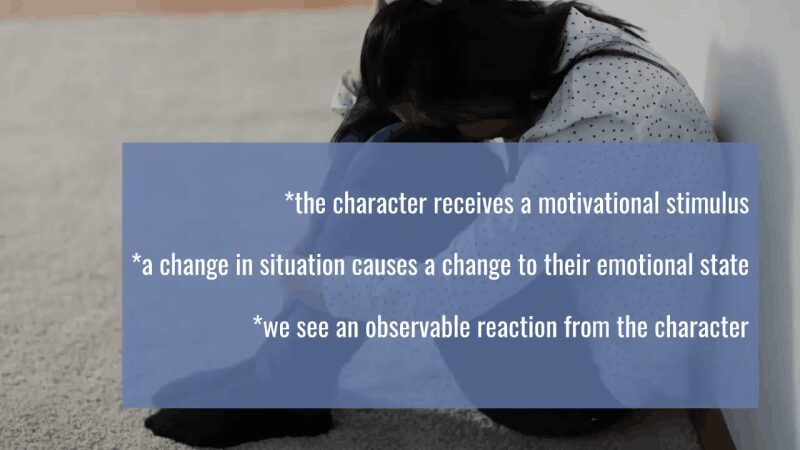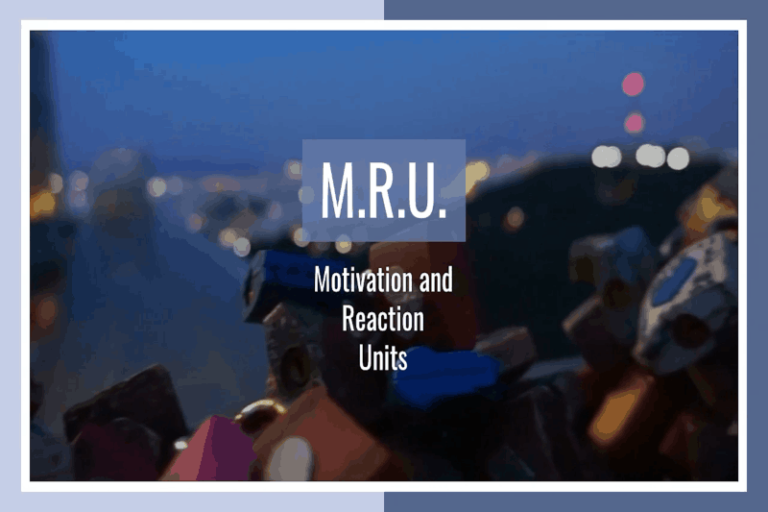A couple of weeks ago I wrote part one of my scene structure series, which featured the large-scale structure of a scene.
In brief, a scene followed by the sequel. See this link:
How to Write a Scene – part 1. Large scale structure of a scene.
This new article also relies heavily on Dwight Swain’s 1965 book on writing, “Techniques of the Selling Writer” which is a wonderland of helpful information about writing a novel. Randy Ingermanson also relied heavily on Dwight for his snowflake theory website and book. I don’t use his method, but it is well worth the read.
The Video:
Once again, I stress that these techniques are merely tools for writers to use and reference and we do not set them in stone. Like any writing guidelines or lessons –
- Try it!
- Take what works for you
- Leave the rest.
- or come back to them later.
I’m starving, have you got an MRU?
Dwight Swain says that each scene must consist of Motivation and Reaction Units and this lets us navigate through a pattern of emotion.
The scene:
Wendy woke to a pounding at her door. She looked at the alarm clock as she threw on her housecoat. 3 am?
She raced down the stairs and threw open the door to see two police officers standing, looking serious and efficient.
Her breath caught, and she froze.
“Ms Mathers?” the policewoman waited for a nod of the head. “I’m sorry to inform you that your son was in a car accident tonight…”
Wendy gulped air and held it.
“… and died from wounds received as a result.”
Wendy shut the door on them where they stood and collapsed to the ground. Her mind was blank in refusal. After a time her hands twitched and then shook, and the rest of her body quickly followed. She was cold. Bitterly cold. And then her mouth opened and a mewling sound began that grew in intensity until it was the howl of a wild animal from the very centre of her being. It cut off sharply for lack of oxygen. Later, the tears came.
What happened:
1. The character receives a motivation stimulus.
Wendy woke to a pounding on the door at 3 am and is told her son is dead.
2. This points to a change in her situation that causes a change to her state of mind and her emotional state.
She ignores the visitors and simply collapses in shock. Her equilibrium shattered, she behaves uncharacteristically.
3. Then we see an observable reaction from the character.
She becomes cold, shakes and howls at the agony and finally cries.
And THERE is a pattern of emotion.
The order is crucial

To construct a motivation-reaction unit, the order is important. The motivation must come before the reaction.
Mikey stood on a pin. He grabbed his foot and yelped. Consider the other way around. Mikey grabbed his foot and yelped. He had stepped on a pin. It’s awkward and not satisfying.
A shot rang from the end of the street. Mary started, is more powerful than, Mary started when a shot rang out from the end of the street.
The cause: The motivation stimulus must be real and visible – something your character can see, hear, smell, taste, or feel.
The Effect: The character’s reaction. The order is just as important in this group of responses from intuitive to controlled action.
a. Feeling. Feeling is not the same as thought. If a scream sounds behind you, you are startled and your heart races before you think, “What was that!” Feeling is a subconscious reaction – you do not decide to feel a particular way.
b. Action. Can be controlled to a degree. You jump out of the way when you hear the scream, but this follows your initial feeling.
c. Speech. Only when you are in control can you respond verbally. After feeling and action, you might scream, “Hey, are you all right?”
Motivation is Objective and External.
Reaction is Subjective and Internal.

Get the timing right
The motivation is less complex than the reaction and will probably require less writing.
In the scene above, the knock on the door, the clock and going downstairs are all Setting.
The motivation is:
“I’m sorry to inform you that your son was in a car accident tonight…”
“… and died from wounds received as a result.”
This is because external processes happen more quickly, e.g. “Mikey stood on a pin” or “a shot rang out”.
Internal processes happen on a different time scale. In the first millisecond, Wendy is shocked and blank. Then, seconds – minutes or hours later and still in shock, she shakes and becomes cold, and screams as she comes to believe. Finally, she cries for her loss, and her initial reaction is finished.
You present these reactions in the order of their time frames, i.e. fastest to slowest, or immediate reflexive reaction to controlled reaction. If you get them out of order, your reader might feel something’s wrong even if they can’t put their finger on what’s bothering them.
Can I leave a part out?
The scene:
Jillian unlocked the front door slowly and with care to be as quiet as possible. She removed her high heels and stepped onto the wooden floor inside, allowing her eyes to adjust to the lack of light. She took two tentative steps up the stairs.
“Where the hell have you been!” A harsh voice came from the lounge-room. (setting)
She freezes, and her sweating fingers let her shoes drop to the stair. Her throat closes. (Feeling) Three months grounded if he caught her one more time, he’d said. Tears fell and her voice came in sobs. (Action)
“I um. I was…” and her dreaded hiccoughs returned, closing her throat and causing squeaking eruptions. (Action)
“Go to bed. We’ll speak in the morning.”
Her damp hands clenched, and her chest tightened. She ground her teeth as she slapped at the tears on her face.
“This sucks, Dad. I’m old enough to do as I wish.” (Speech)
~~~~~~~~~~
Sometimes the action and dialogue make clear one or two of these parts and we can leave them out, but we can’t leave out all three because then we have no reaction.
“Hey, Annie!” he called. “You good?”
“I’m great!”
“Hey, Annie!” he called. “You good?” is the motivating stimulus.
If we wanted, we could spell out Annie’s character reaction like this:
a. Feeling: Annie glowed because he’d remembered her name!
b. Action: She smiled.
c. Speech: “I’m great!”
Here, we’ve dropped two of the three, because it seems likely that Annie might smile given how excited she is to see him and know he remembered her name.
We might leave out Annie’s dialogue and just go with her smile, or write it many other ways, but the order a. b. c. must remain. The parts you keep in must be in the correct order.
A feeling must come first, and a reflex comes before a rational action.

Rinse and repeat
Having completed an MRU Motivation-Reaction Unit, you write another one, and another, and again until the scene is finished. There are more suggestions and information in Dwight Swain’s Techniques of the Selling Writer and I strongly suggest a read if this sort of structure discussion makes any sense to you at all.
I have tried this method and found it hard to do while I’m composing, but it is seriously useful as a tool during editing to pace and move the story forward. Also, like all things in the writing craft, the more you do it the easier it becomes.
Thanks for coming and see you next week!








